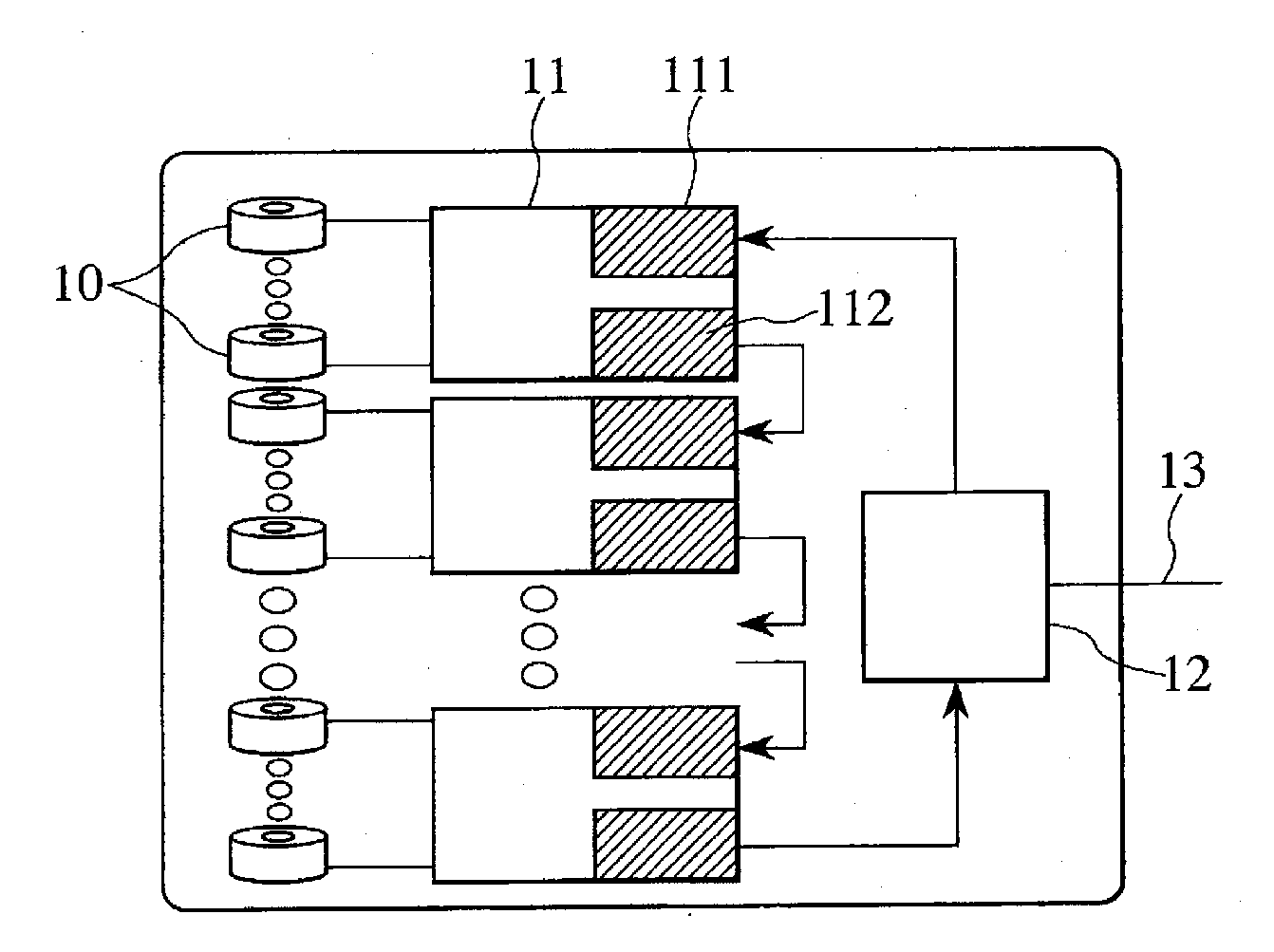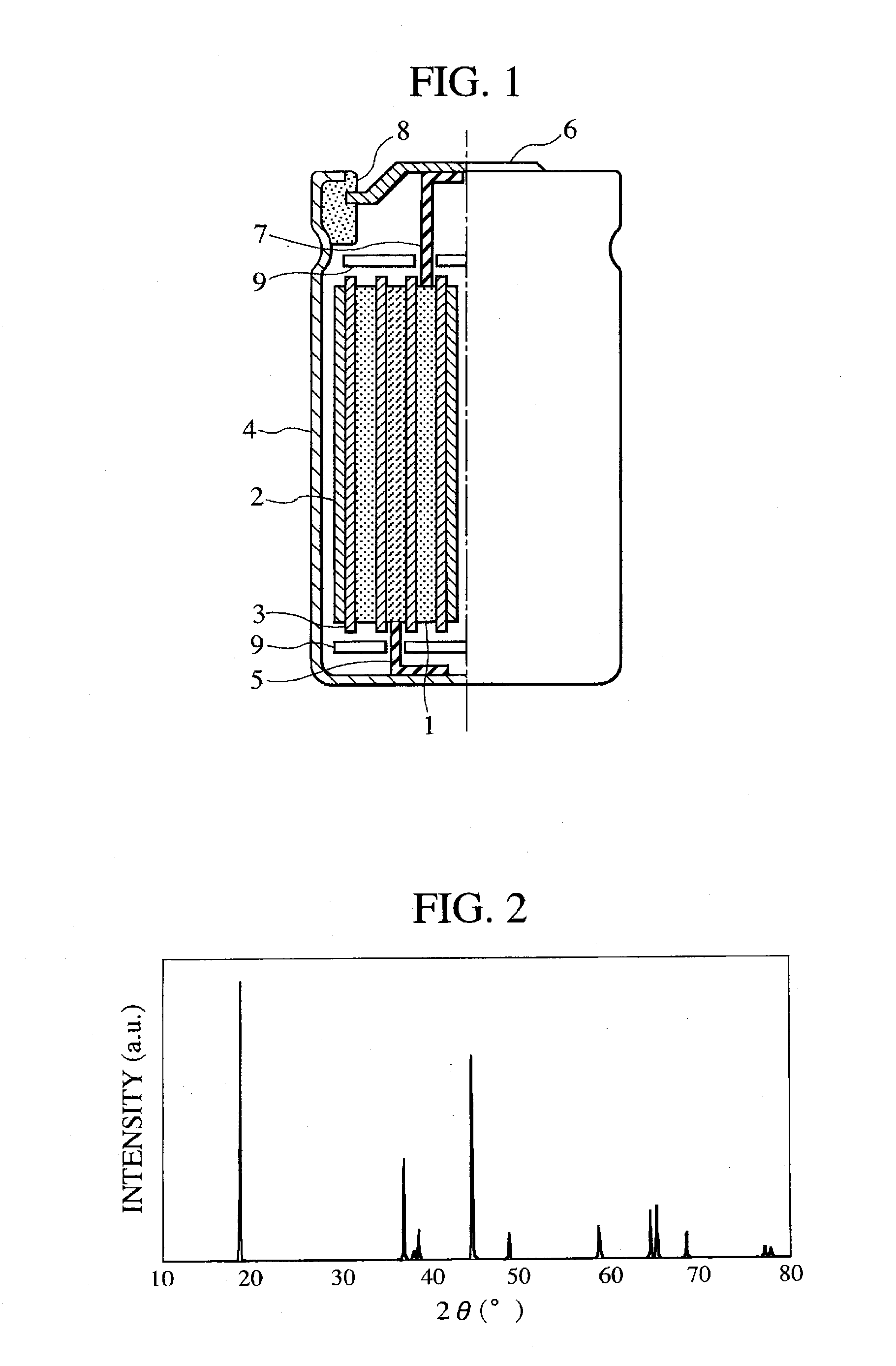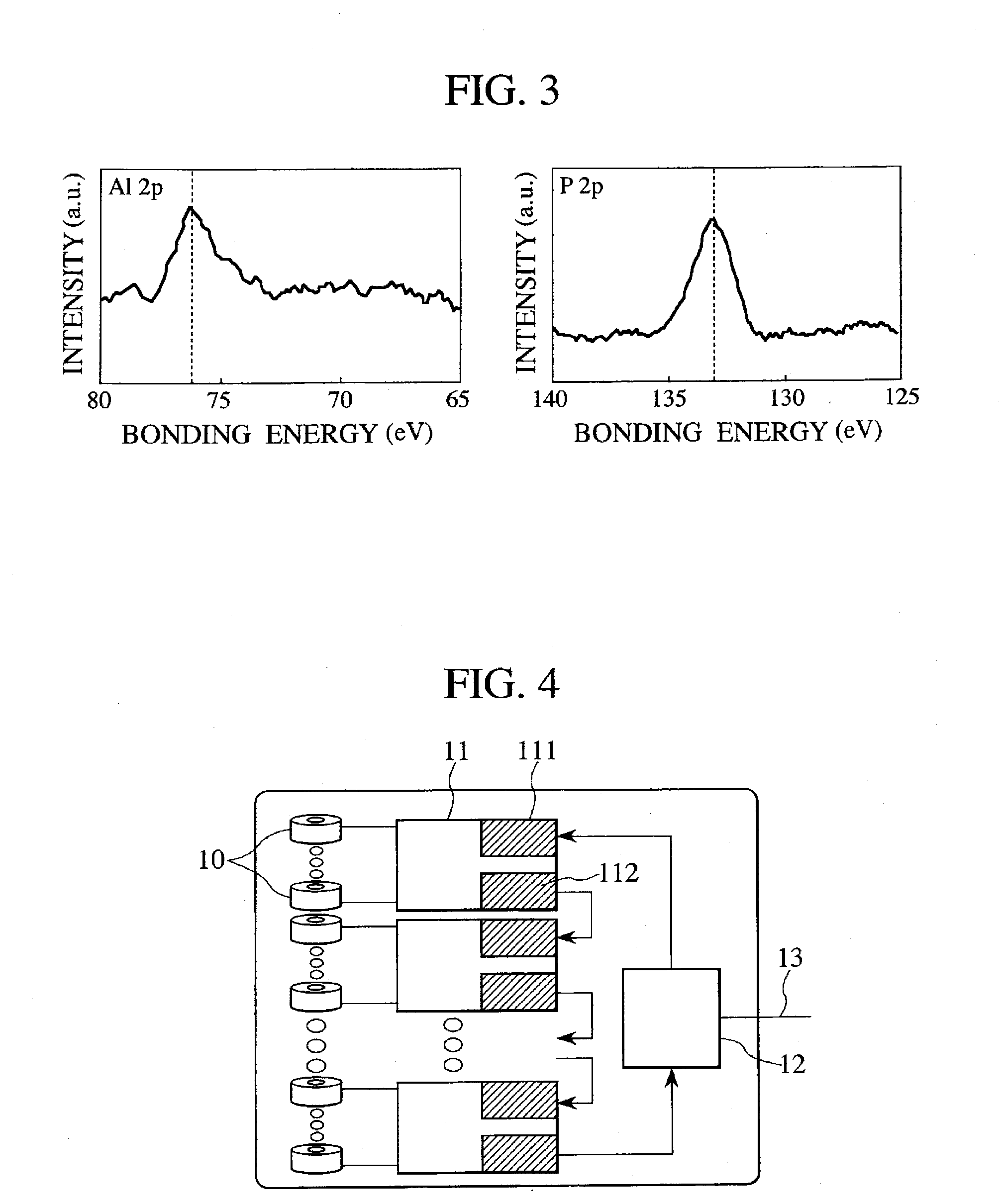Positive electrode material for lithium secondary battery, lithium secondary battery, and secondary battery module using lithium secondary battery
- Summary
- Abstract
- Description
- Claims
- Application Information
AI Technical Summary
Benefits of technology
Problems solved by technology
Method used
Image
Examples
example 1
Manufacture of Positive Electrode Material
[0073]In Example 1, lithium carbonate, triamanganese tetraoxide, cobalt dioxide, and nickel oxide were used as the starting material for manufacturing the positive electrode material, they were weighed such that Li:Mn:Co:Ni was 1.02:0.34:0.5:0.14 at the raw material ratio, and pulverized admixed in a wet process by a pulverizer. After drying, the powder was placed in a high purity alumina container and provisionally baked in an atmospheric air at 600° C. for 12 hours in order to improve the sinterability. Then, the powder was again placed in the high purity alumina container and baked under the conditions of keeping for 12 hours in an atmospheric air at 900° C., air cooled and then crushed and classified. FIG. 2 shows an X-ray diffraction profile for the obtained positive electrode material. The obtained peak was compared with International Center for Diffraction Data Card (PDF-2) to confirm that this was in a hexagonal layered structure. Ac...
example 2
[0098]In this example, boron oxide was added as the raw material and the raw materials were weighed such that Li:Mn:Co:Ni:B was 1.02:0.3:0.3:0.14:0.24 at raw material ratio, and the positive electrode material was manufactured in the same manner as in Example 1. The crystal structure in this example was a hexagonal layered structure and had a composition of LiMn0.3(Li0.02Co0.3Ni0.14B0.24)O2.
[0099]Then, a surface treatment was applied in the same manner as in Example 1 by using 4.6 g of aluminum nitride and 1.3 g of ammonium fluoride. As a result of XPS analysis of the positive electrode material, presence of AlF3 and Li3PO4 could be confirmed on the uppermost surface, and from the result of ICP analysis, it was found that AlF3 was 1.0% by weight and Li3PO4 was 0.5% by weight of the positive electrode material. In this example, the leaching amount of Mn was 9 ppm by weight.
[0100]Table 3 shows the characteristic of the positive electrode material manufactured in Example 2.
[0101]A 1865...
example 3
[0103]In this example, aluminum oxide was used instead of cobalt dioxide as the raw material and the raw materials were weighed such that Li:Mn:Ni:Al was 1.02:0.5:0.2:0.27 at raw material ratio, and the positive electrode material was manufactured in the same manner as in Example 1. The crystal structure in this example was a hexagonal layered structure and the composition was LiMn0.5(Li0.02Ni0.2Al0.27)O2.
[0104]Then, a surface treatment was applied in the same manner as in Example 1 by using 0.7 g of magnesium nitrate instead of aluminum nitrate and 0.26 g of ammonium fluoride and 0.31 g of hydrogen diammonium phosphate. As a result of XPS analysis of the positive electrode material, presence of MgF2 and Li3PO4 could be confirmed at the outermost surface, and from the result of ICP analysis, it was found that MgF2 was 0.2% by weight and Li3PO4 was 0.2% by weight of the positive electrode material. In this example, the leaching amount of Mn was 12 ppm by weight.
[0105]Table 3 shows th...
PUM
 Login to View More
Login to View More Abstract
Description
Claims
Application Information
 Login to View More
Login to View More - R&D
- Intellectual Property
- Life Sciences
- Materials
- Tech Scout
- Unparalleled Data Quality
- Higher Quality Content
- 60% Fewer Hallucinations
Browse by: Latest US Patents, China's latest patents, Technical Efficacy Thesaurus, Application Domain, Technology Topic, Popular Technical Reports.
© 2025 PatSnap. All rights reserved.Legal|Privacy policy|Modern Slavery Act Transparency Statement|Sitemap|About US| Contact US: help@patsnap.com



